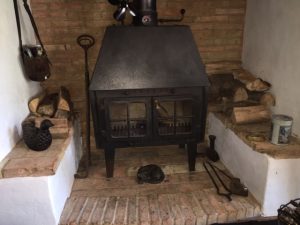
I recently spent a day chimney sweeping in Suffolk that I thought might interest people. Many of the places I swept on this day were thatched properties, who had previously had stoves fitted by the Cut Maple Fireplace and Stove company. Clearly, due to insurance requirements, there is an imperative placed upon thatch properties to have their chimneys regularly swept even in these difficult times. I started the day in with a couple of jobs in Haverhill then Calford Green where I did a double sweep, before moving to sweeps in Kedington, Wixoe, Stoke-By-Clare, Cavendish, Glemsford, Lavenham and finally Rattlesden. I have included in this week’s blog some photos of some of the stoves I swept this day.
Cut Maple Fires & Stoves Sturmer Road, New England CO9 4BB 01440788788 07817581296 cutmaple@fireplacesetc.co.uk www.fireplacesetc.co.uk
I met some really lovely, interesting customers on the day many of whom were working from home or were retired. One customer was a retired army helicopter pilot who had after retiring from the army after lengthy service had worked in the film industry flying helicopter mounted cameras. He told me an number of hair raising stories about crashing at the height of the troubles in the Mountains of Mourne in Northern Ireland due to a mechanical defect and surviving to tell the tale even though he was only armed 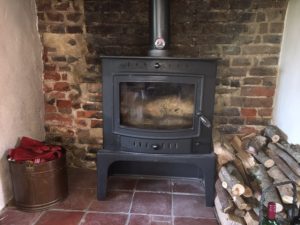
with a 9mm pistol with 8 rounds of ammunition. On another occasion after having left the army, the helicopter he was flying was hijacked and he was forced at gun point to fly to Gartree prison in Leicestershire to break out a Category A prisoner. He was forced to land his helicopter in the prison exercise yard and collect the escaping convict. Fortunately, all those concerned were later caught, convicted and sent to prison for lengthy spells.
Having completed my final sweep of the day in Rattlesden I was able to visit the old American airfield, the entrance to which was very close to where I had been working. Amazingly, the main runway is still in place and can be seen in one of the photographs. It is massive, over 50 yards wide and thousands of yards long.
The old control tower is also still in situ and has a number of plaques on it commemorating the airfields wartime activities. The larger of the two plaques commemorates the deeds of Second Lietenant Robert Edward Femoyer which earnt him the Congressional Medal of Honor, America’s highest award for gallantry. The citation reads – “Severely wounded by anti-aircraft fire over Meresburg Germany, LT Femoyer refused painkillers, keeping his mind clear to guide his plane out of danger and save his comrades. Despite extreme pain and loss of blood, he navigated his lone bomber for 2 and a half hours, clinging to the last slender thread of life until his plane
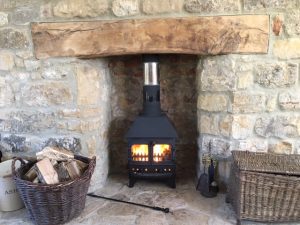
had arrived safely over the English Chanel. LT Femoyer died shortly after landing. The heroism and self-sacrifice of LT Femoyer were in keeping with the highest traditions of the 447th Bomb Group and the US Army Air Corps”.
Rattlesden airfield was built in 1942 as a Class A bomber airfield. The airfield had three intersecting concrete runways, perimeter track and, for USAAF use, hardstands for fifty aircraft and two dispersed, black-painted T-2 hangars. Living and messing sites were on the east side of the field. Situated four miles south of the A14 highway between Stowmarket and Bury St. Edmunds
The airfield was opened in 1942 and was used by the United States Army Air Forces Eighth Air Force. Rattlesden was given USAAF designation Station 126 (RS). Rattlesden, remained without a combat unit until the 447th Bombardment Group (Heavy) arrived from Harvard AAF Nebraska on 29 November 1943. The 447th was assigned a group tail code was a “Square-K”.
The group flew the Boeing B-17 Flying Fortress as part of the Eighth Air Force’s strategic bombing campaign and served chiefly as a strategic bombardment organization. The 447th’s first mission from Rattlesden was despatched on Christmas Eve and, during the course of hostilities, another 256 missions were flown from the base.
The group helped to prepare for the invasion of the Continent by attacking submarine pens, naval installations, and cities in Germany; ports and missile sites in France, and airfields and marshalling yards in France, Belgium, and Germany. During Big Week, 20–25 February 1944, the 447th took part in the intensive campaign of heavy bombers against the German aircraft industry. Supported the invasion of Normandy in June 1944 by bombing airfields and other targets near the beachhead. Aided the breakthrough at Saint-Lô in July and the effort to take Brest in September. Pounded enemy positions to assist the airborne invasion of the Netherlands in September. Also dropped supplies to Free French Forces during the summer of 1944.
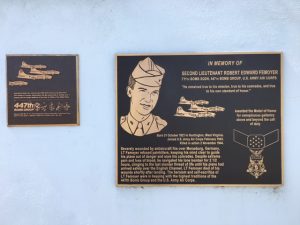
The 447th turned to strategic targets in Germany in October 1944, placing emphasis on sources of oil production until mid-December. 2nd Lt Robert Edward Femoyer, navigator, won the Medal of Honor for action on 2 November 1944. While on a mission over Germany, his B-17 was damaged by flak and Femoyer was severely wounded by shell fragments. Determined to navigate the plane out of danger and save the crew, he refused a sedative and, for more than two hours, directed the navigation of the bomber so effectively that it returned to base without further damage. Femoyer died shortly after being removed from the plane.
During the Battle of the Bulge, December 1944-January 1945, the group assaulted marshalling yards, railroad bridges, and communications centers in the combat zone. Then resumed operations against targets in Germany, attacking oil, transportation, communications, and other objectives until the war ended. During this period, also supported the airborne assault across the Rhine in March.
After the war, the field was transferred to the RAF on 10 October 1945. For a short while it was used by the RAF for basic training (square bashing) and then as a Ministry of Food buffer depot but was finally inactivated on 15 August 1946. In the 1960s part of the site was used for RAF Bristol Bloodhound surface to air missiles but when this was abandoned the whole airfield was sold during 1967/68.
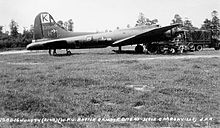
With the end of military control the land was returned to agricultural use. Today there is not much left of the living and mess sites of the airfield, only part of the main runway and the south & eastern part of the perimeter track still exist plus a few of the hardstands. The most complete area of the airfield today is the Technical No. 1, east of the airfield which still has around 20 buildings left including the large T-2 hangar. The Rattlesden Gliding Group uses the southwest end of the former main runway, with one lane of the former southwest perimeter track being used as a taxiway. The control tower is their club house.
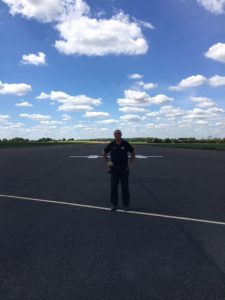


 My name is Paddy McKeown, I am a retired police officer (Detective Sergeant – Metropolitan Police), turned chimney sweep. I have completed training with ‘The Guild of Master Chimney Sweeps’, and Rod Tech UK (Power Sweeping).
My name is Paddy McKeown, I am a retired police officer (Detective Sergeant – Metropolitan Police), turned chimney sweep. I have completed training with ‘The Guild of Master Chimney Sweeps’, and Rod Tech UK (Power Sweeping).




Comments are closed.